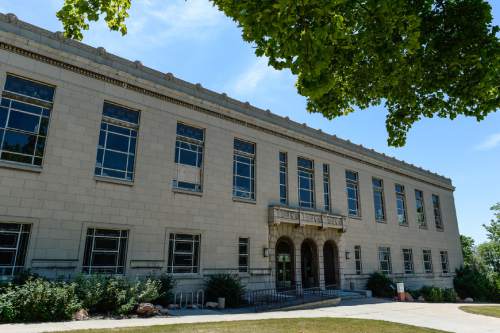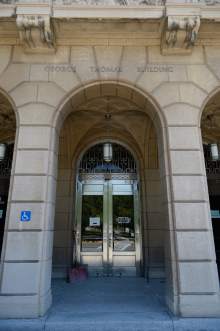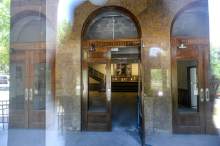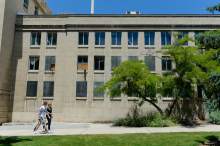This is an archived article that was published on sltrib.com in 2015, and information in the article may be outdated. It is provided only for personal research purposes and may not be reprinted.
Utah taxpayers may be paying about $250,000 more than is needed for the University of Utah to run a pair of yet-to-be-constructed classroom buildings, according to a state audit released Tuesday.
The U. used its own formula, not that of the Board of Regents, to determine the chunk of public money necessary for upkeep on the Crocker Science Center and on Orson Spencer Hall, according to an analysis from the state legislative auditor's office.
State lawmakers approved the U.'s $1.7 million request for the building projects in March.
The discovery is just one fissure in a much larger crack: Utah's system for financing state colleges' operation and maintenance of buildings, the report found, is in disrepair.
"What we want to know is: What is it costing for [operations and maintenance] for the facilities? We'd like to know what the costs are," Senate President Wayne Niederhauser, a Sandy Republican, told higher education leaders at a Tuesday legislative panel.
The answer is unclear. Spotty bookkeeping at the Utah System of Higher Education and other agencies, audit supervisor Kade Minchey told the Legislative Audit Subcommittee, has stymied efforts to track the money.
And compiling consistent data is a tall order. Colleges track it differently, and they do it with the approval of their CEO — David Buhler, Utah's higher education commissioner.
The University of Utah, for its part, won Regents' approval for the maintenance requests.
"We don't hide anything. We show all the work," said Michael Perez, U. associate vice president for facilities management. "We think it's reasonable and we've been doing it for a number of years."
But next year, Perez added, his office will cross over to the Regents' formula.
The lack of uniformity unsettled House Speaker Rep. Greg Hughes.
"My fundamental question is just, 'Why?'" the Draper Republican asked. "Why are we having different eyes determine the status of these buildings?"
Statewide, three agencies oversee money spent on keeping lights on and paying janitors at hundreds of college buildings. But some bookkeeping, including costs for revenue-generating buildings including stadiums, theaters and art museums, has slipped through the cracks.
"It seems to me we ought to have greater consistency," said Rep. Brian King, D-Salt Lake City.
Higher education officials and the state building board are working toward that end, requiring more information from colleges asking for maintenance money. Soon, they will start monitoring each building across the state, said Jeffrey Reddoor, State Building Board director.
"We've made a lot of progress in the last couple years," he told the panel before acknowledging there is still work to be done.
It's not the first time a report from Minchey's office has slammed higher education leaders.
Legislative auditors found that in 2011 a total 23 buildings constructed using private donations were ineligible for public maintenance funds but probably received them anyway — draining a possible $4.3 million annually from the $133 million lawmakers appropriated.
Education leaders agreed that "auxiliary," revenue-generating buildings should help cover the upkeep bills with ticket sales. Higher education building managers have discussed such strategies, the new report said, but few have put one in place.
Using ticket revenue to pay for buildings was among three changes recommended by the 2011 report that have yet to be widely adopted.
Southern Utah University, for example, charges an additional fee for entrance to the Utah Shakespeare Festival, Reddoor said, but the revenue isn't enough to cover the venue's upkeep.
Meanwhile, the cost of materials is on the rise, notes Perez. Increasing costs set off a vicious cycle where inadequate funding postpones maintenance, which in turn ratchets up funding needs.
At the U., the Crocker Science Center and Orson Spencer Hall are still in the design phases. Construction is expected to start next year.
Twitter: @anniebknox —
Upkeep at Utah's universities and colleges
Since 2001, 200 more buildings and 7.8 million square feet have been added, worth a total $6.8 billion. In the 2014 fiscal year, the maintenance fees were $141 million, according to a new legislative audit.











